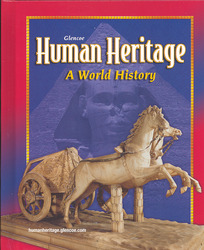Human Heritage: A World HistoryChapter 12:
The Hellenistic PeriodWeb Activity Lesson Plans“Alexandria, the Great City”Introduction
Students have read about Alexander's founding of Alexandria, Egypt, a city that became a great cultural, academic, and economic center. In this lesson, students will learn what impact Alexander had on the city of Alexandria, and they will understand how Greek culture became such an important part of the city. Lesson Description
Students will use information from the Egyptian Ministry of Travel Web site to learn about the ancient city of Alexandria, Egypt. Students will read a description of the ancient city and its features when Alexander visited the site. They will also read about how Alexander's successor, Ptolemy, brought Greek culture to Alexandria. Students will then answer four questions and apply this information by each imagining that he or she is Dinocrates, the Greek architect given the responsibility of building Alexander's city. They will write a letter to Alexander describing the project's progress. Instruction Objectives
- Students will be able to explain the role Alexander played in the founding of the city of Alexandria, Egypt.
- Students will be able to understand the factors that led to the growth and success of Alexandria, Egypt.
- Students will be able to identify which architectural and natural features Alexander would have seen, and which features were built later.
Student Web Activity Answers
- He built the Heptastadion, or causeway, connecting the island to the mainland.
- Canals were in place. The waterways of the harbor and the Nile were already being used for trade and travel.
- Students' answers should include that it was a bridge between Europe and Africa. The Mediterranean brought trade, while canals and the Nile made for easy movement of people and goods. As a result, improved communications led to greater military security.
- Ptolemy was a general, but he was also a historian who wrote details of Alexander's campaigns. He invited scholars and artists from all over the world to promote the learning culture in Alexandria. Ptolemy invited scholars, scientists, and artists to come to Alexandria. He also valued Greek culture above all other cultures, and made sure it was preserved in his city.
- Students' letters could include information about the harbor of Pharos, the strong walls of the city, the Heptastadion, temples, the palace plans, the lighthouse, and the Library. The letters should include drawings of the plans for the city.
Learn More on the Web
For a map of the ancient city of Alexandria, see
http://ce.eng.usf.edu/pharos/Alexandria/Gallery/old_map.gif  | 




